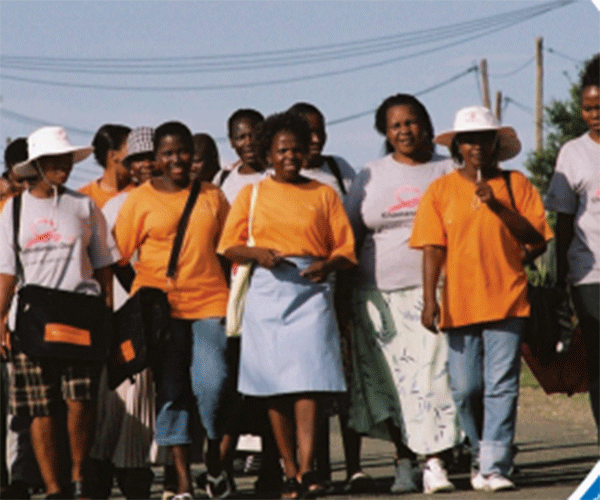HIV/AIDS communication programs in South Africa are successfully influencing people to have safer sexual relationships – and the more programs to which people are exposed, the more they take heed.
This is the conclusion of the second National Communication Survey on HIV/AIDS 2009(NCS 09). Dr Saul Johnson, of Health & Development Africa, who led the research process, says that overall, the country’s HIV/AIDS communication programs are working – and they are having a positive impact particularly with youth, on the levels of condom usage, HIV testing, and knowledge of the risks of having multiple sexual partners.
One of the major findings of the study is that men and women are only likely to settle into stable relationships – married or living together – once they are in their late 30s, and this has implications in relation to condom usage and their number of partners.
The survey revealed that an overwhelming majority of South Africans – 87% across all age groups – know that condoms are effective for HIV prevention. Clear evidence was found showing that condom usage is highest among youth and decreases among older people. People in stable, long-term relationships are less likely to use condoms than people who are in less stable relationships. Condom usage clearly increases with the number of communication programs to which people are exposed.
Most respondents, across age groups and gender, believe that cheating is the norm – but this perception does not match reality. Multiple partnerships are only relatively common among younger men (16%) but decline with age, and are very low among women across all ages.
An important finding from the survey is that more people are aware that having multiple partners increases the risk of HIV infection, increasing from 6.2% in the 2006 NCS to 12.2% in the 2009 NCS. In addition, more people are reporting having fewer sexual partners in the past 12 months, reducing from 16.5% in 2006 to 11.4% in 2009.
“While the reduction in sexual partners is still modest, we have observed much greater levels of knowledge about the risks of multiple partners. This indicates that communication programmes are starting to impact on the levels of knowledge and there are some indications of behaviour change that has been the emphasis of many communication programmes in the past year, although there is still no clear statistical correlation as yet,” says Johnson.
The survey found that communication programmes have been successful in getting people to discuss HIV testing with their partners – and that couples who do so are four times more likely to be tested for HIV. There has been a significant uptake of testing among men, in particular, with many more indicating that they have tested for HIV than previously.
Knowledge levels amongst South Africans in relation to treatment for HIV has increased significantly, with the majority knowing that antiretroviral therapy (ART) is a treatment for HIV and more than 73% knowing that ART needs to be taken for life.
Johns Hopkins University-based researcher Dr Larry Kincaid, one of the lead researchers on the impact of communication interventions, says: “The survey demonstrates a causal connection between the communication programmes and people’s behaviour, and also that the more programmes people are exposed to, the more they are positively influenced – a clear indication that the programmes are having a substantial impact on South Africans.”
While the survey points to many successes it also highlights a number of gaps and risks in the AIDS communication response.
While there is evidence that the message around the risks of multiple partners is getting through, this message needs to be sustained in the future to further increase knowledge levels and bring about behaviour change. This should not be done at the expense of messages that promote correct and consistent condom usage, particularly in high-risk sexual encounters.
Communication programmes need to strengthen interventions that highlight the linkages between alcohol, sex and HIV. The survey found that there is a relationship between heavy drinking and having multiple partners, and that when people are drunk, they and their partners are more likely to not care about contracting HIV.
There is an urgent need to increase knowledge levels around safe feeding practices for pregnant mothers living with HIV. Only 1.7% of people know that exclusive breastfeeding and only 14% know that exclusive formula feeding can prevent HIV. Mixed feeding, which is a common practice in South Africa, is known to increase the risk of transmission of HIV from mother to child.
“The National Communication Survey is a great barometer of how communication is increasing knowledge about HIV, and bringing about change in people’s attitude to having responsible sexual lifestyles, and provides the foundation for an evidence-based national HIV communication strategy,” says Junaid Seedat, Communication, Advocacy and Campaigns Manager for the South African National AIDS Council (SANAC).





